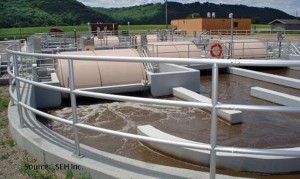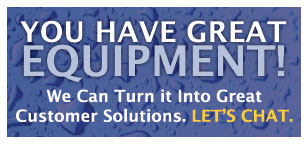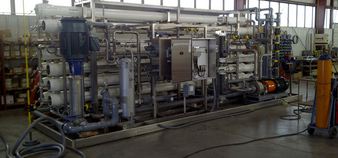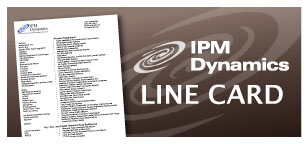Membrane Technology: Doing More with Less in the Wastewater Solutions Arena (A Lot More.)
Posted on November 14th, 2012 by Jason Wilson Membrane technology – It’s costing less. It’s doing more. It’s capturing more attention among the water and wastewater treatment sectors. From the industrial wastewater perspective, membrane technology is uniquely poised to help lower water treatment costs and give industrial entities the tools to meet regulations that grow tougher each year.
Membrane technology – It’s costing less. It’s doing more. It’s capturing more attention among the water and wastewater treatment sectors. From the industrial wastewater perspective, membrane technology is uniquely poised to help lower water treatment costs and give industrial entities the tools to meet regulations that grow tougher each year.
Some of the benefits (and challenges) of membrane technology when applied to wastewater treatment are highlighted in a recent article from Waterworld, including the ways the technology can be customized for a particular goal – with key emphasis on how experienced, in-depth knowledge of membranes is critical. While applying human knowledge and ingenuity may increase the cost associated with membrane technology, the benefits (such as accuracy toward regulation compliance and creative, customized solutions for wastewater challenges) rise above the numbers.
What Membrane Technology Has to Offer:
– Membrane filters create the barrier to retain suspended solids, and can take the place of big settling tanks at some industrial plants. The compactness is a solid benefit when space is precious.
– Since membrane technology works by filtering, the steps toward clarification can be quicker than methods relying on settling.
– Membranes may help reduce sludge because greater levels of organisms and suspended solids can be captured and broken down.
In fact, membrane technology on a global level could reach revenue levels of nearly $400 million in the next five years. Across the power, agricultural and food/beverage sectors, membrane technology is expected to become more efficient and more customizable toward water and wastewater process solutions.
Here’s an example. Through its equipment suppliers of WesTech, Integrated Separation Solutions (ISS), Centrisys and Vogelsang, IPM Dynamics worked closely with the engineer and end user to provide a complete membrane treatment system for an anaerobic digester discharge stream in Kansas. The process begins with the sludge output of an anaerobic digester treating cattle manure. Digested sludge is first dewatered with a Centrisys centrifuge with the centrate proceeding through different stages of microfiltration and reverse osmosis (RO) provided by WesTech and ISS. Vogelsang rotary lope pumps are used throughout the system for positive displacement pumping needs. The resultant solids are then land applied to augment fertilizer needs on nearby farms while the treated effluent is reused within the plant itself for various non-potable service water needs.
With more than 40 years of experience across the wastewater, power, process and mining sectors, IPM Dynamics offers the right mix of human ingenuity and project knowledge to create the solutions with membrane technology (and many other processes) that meet customers’ unique needs. Learn more today about the diverse high-quality equipment manufacturers from across the country proudly represented by IPM Dynamics.


